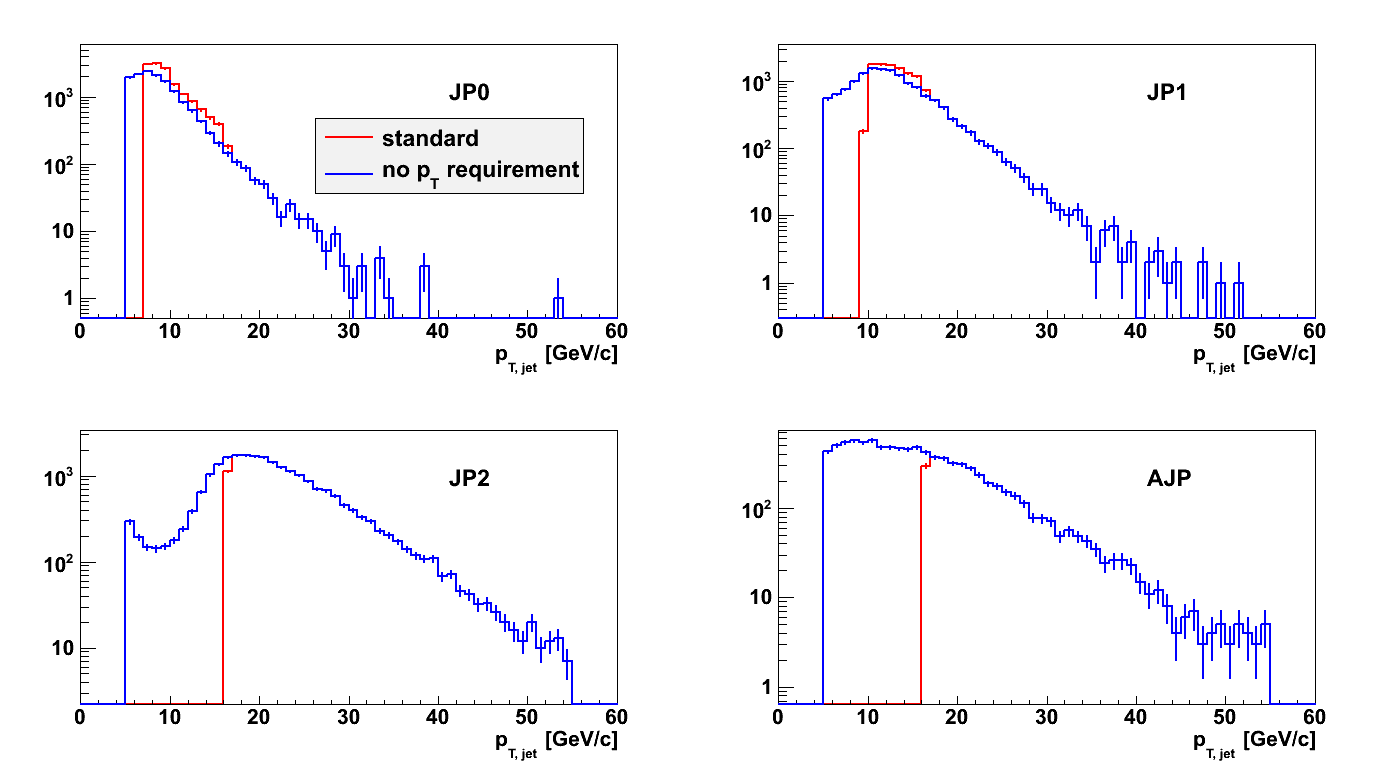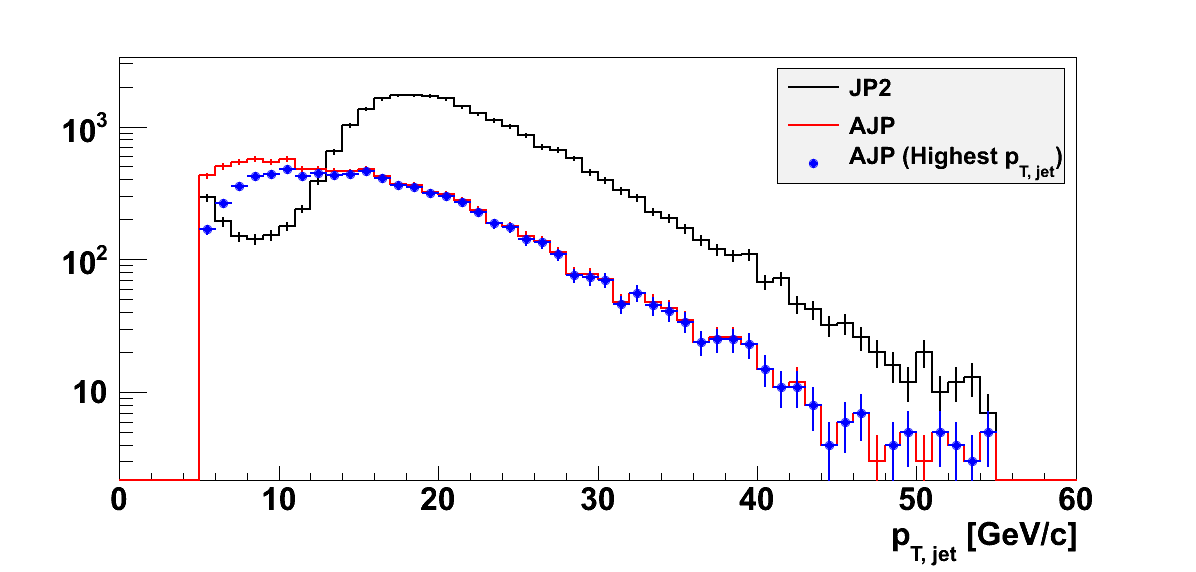- drach09's home page
- Posts
- 2022
- 2020
- June (1)
- 2019
- 2018
- 2017
- 2016
- 2015
- 2014
- December (13)
- November (2)
- October (5)
- September (2)
- August (8)
- July (9)
- June (7)
- May (5)
- April (4)
- March (4)
- February (1)
- January (2)
- 2013
- December (2)
- November (8)
- October (5)
- September (12)
- August (5)
- July (2)
- June (3)
- May (4)
- April (8)
- March (10)
- February (9)
- January (11)
- 2012
- 2011
- October (1)
- My blog
- Post new blog entry
- All blogs
Run-11 Transverse Jets: Trigger Definitions Revisited (part II)
In a previous blog entry I discussed revisiting the trigger definitions for analysis of the 2011 JP-triggers. The confounding issue was the behavior of AJP which exhibited no sign of a trigger "turn-on." Zilong looked into this as well and found that by completely relaxing the pT threshold, it appears the AJP turn-on is evident. My previous update set a minimum of 7.1 GeV, corresponding to the lowest allowed pT for a JP0 trigger. His analysis did not include the trigger simulator, since his sample of jet trees were made before the update. Here, I examine lowering the thresholds while also including the trigger simulator in the trigger definitions.
Figure 1

In Fig. 1 I examine the trigger definitions for the "standard" definitions compared to removing the pT requirement. Now, the pT threshold is relaxed all the way to 5 GeV. Indeed, now, there does appear to be a slight rise in the AJP spectra, peaking around 8-9 GeV. This was not evident in previous plots which cut off at 7.1 GeV, where the "rise" was disguised as statistical fluctuation.
Figure 2

In Fig. 2, I compare AJP to JP2 for the relaxed definition. The turn-on is quite clear when one singles-out the highest-pT jet. Around 15 GeV, the AJP distributions merge. My guess is that there is splitting related to the AJP trigger as well as the jet algorithm that play a role in the low-threshold behavior. Examination of simulation is, now, quite important.
- drach09's blog
- Login or register to post comments
